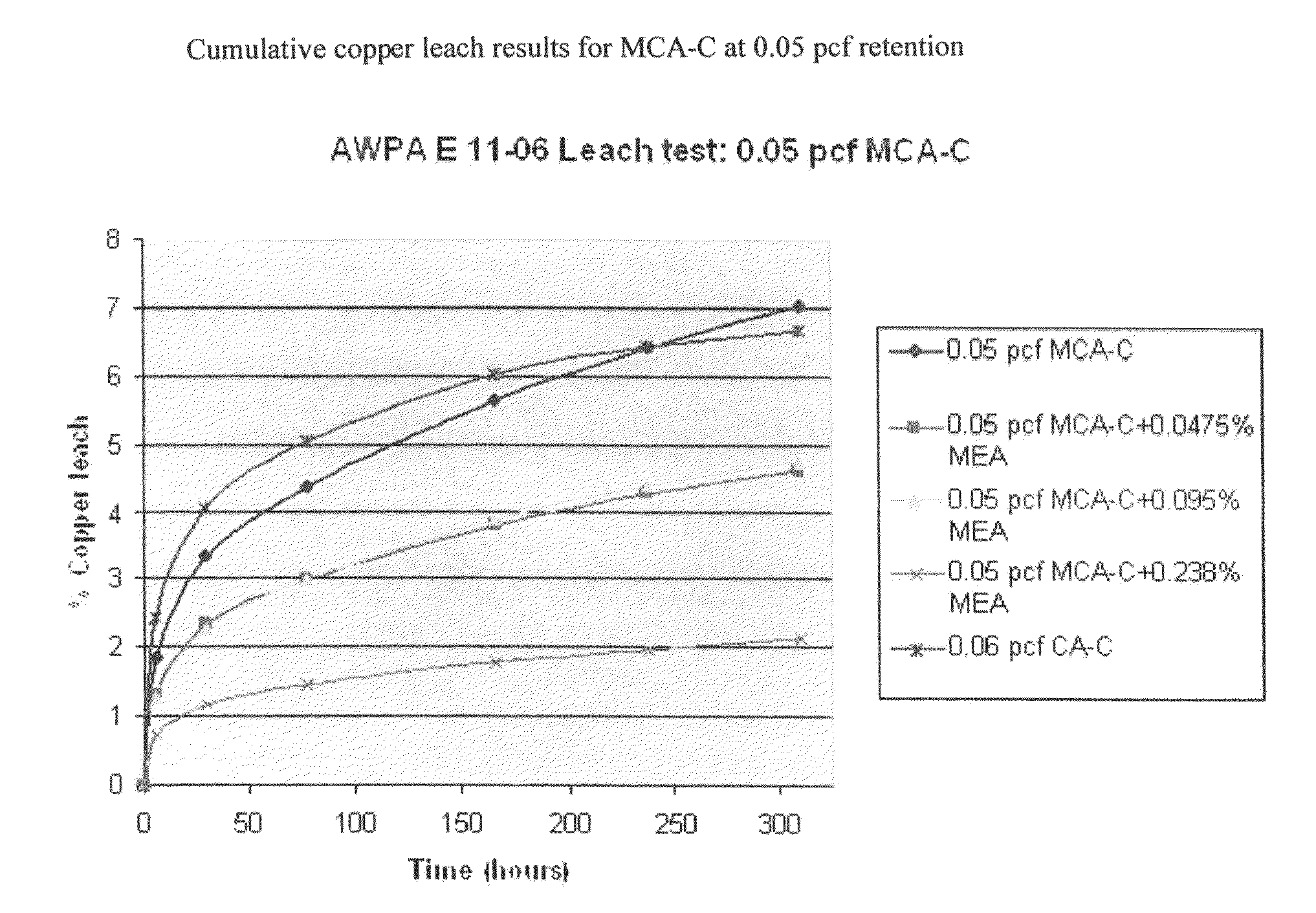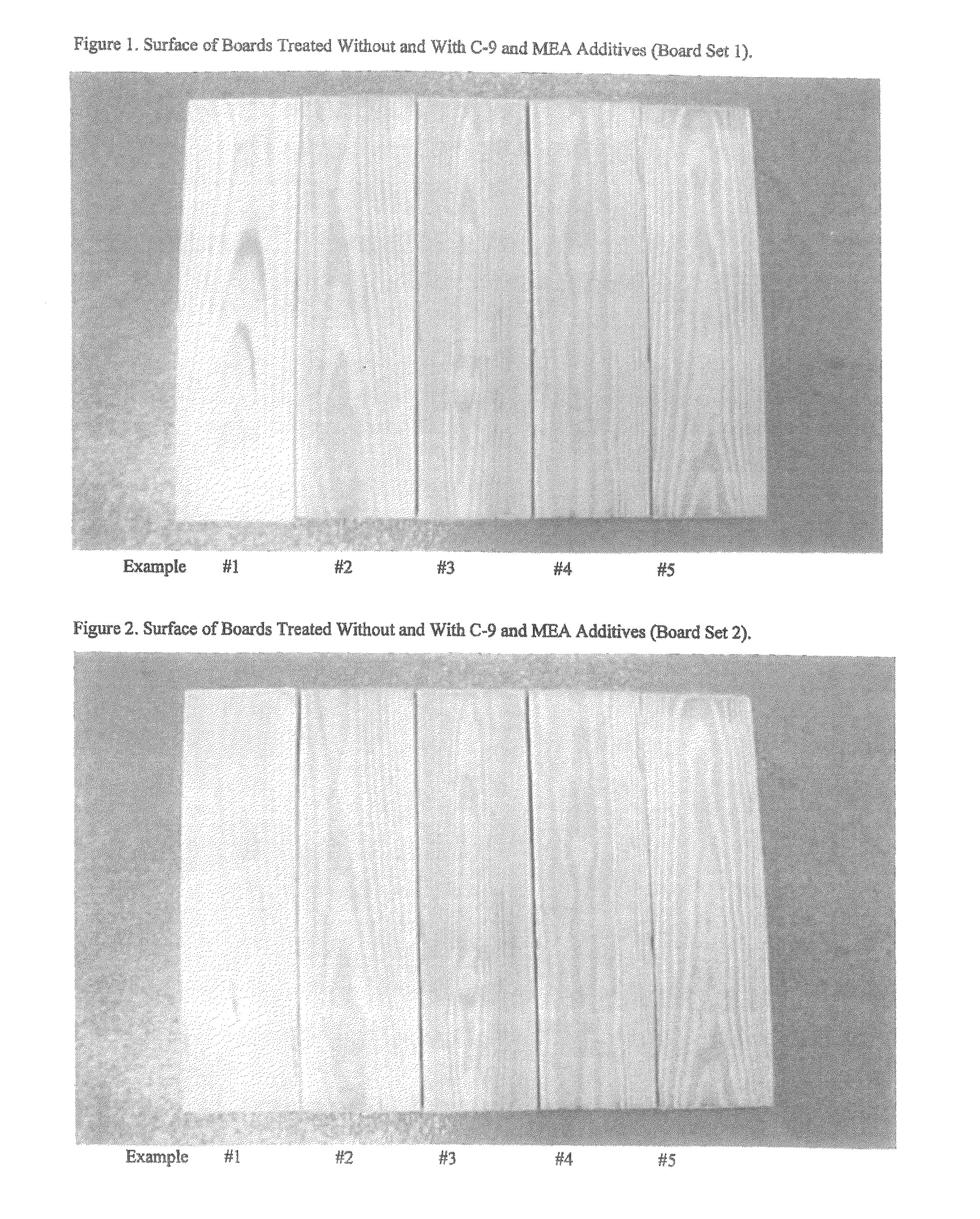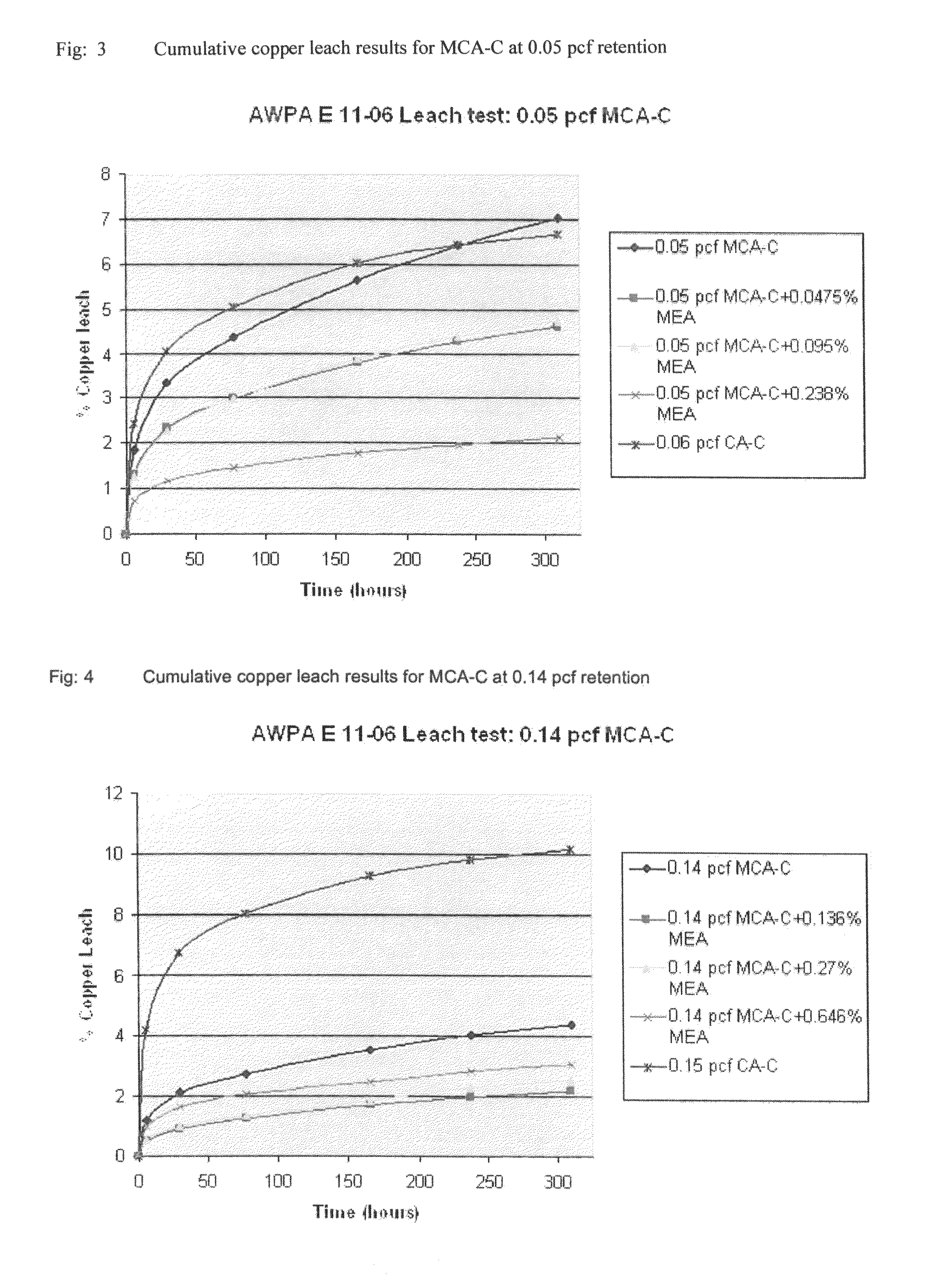Micronized copper-containing compositions useful to mitigate residues on wood surfaces
a technology of micronized copper and composition, which is applied in the field of wood preservative composition, can solve the problems of residues on the surface of treated wood that are “blotchy” and undesirable, and the use of micronized copper to treat wood has a significant drawback, so as to enhance the antimicrobial effect of the composition
- Summary
- Abstract
- Description
- Claims
- Application Information
AI Technical Summary
Benefits of technology
Problems solved by technology
Method used
Image
Examples
example 1
Control Example with No Copper Amine
[0048]Control with No Anti-Chalk Additive
[0049]The copper slurry control was prepared by adding 272.7 grams of the micronized copper azole concentrate plus moldicides to water. The final weight of the wood treating solution was brought up to 100 pounds. The copper in this slurry was calculated to be 0.200 weight percent. The target copper retention expressed as pounds of copper per cubic foot (pcf) of wood is 0.050.
[0050]This solution was used to treat six 2×6×24 inch SYP boards as described above. For an average of the six boards, the initial board weight was 4.700 lbs and the final board weight was 7.826 lbs, leaving the weight gain associated with the treatment solution to be 3.126 lbs. The treating solution provided 27.28 lbs of weight per cubic foot (“pcf”) of board, providing an amount of copper of 0.055 pcf.
[0051]FIGS. 1 and 2 illustrate the chalk-like deposits on the boards identified as Example # 1 treated with the solution containing no ...
example 2
[0052]Addition of 10% C-9 Copper-Mea Concentrate to Micronized Copper
[0053]The copper slurry control was prepared by adding 245.4 grams of the micronized copper azole concentrate plus moldicides to water. To this mixture 94.58 grams of C-9 was added and the final weight of the wood treating solution was brought up to 100 pounds. The copper in this slurry was calculated to be 0.200 weight percent, 0.18 percent from the micronized copper and 0.02 percent from the C-9 concentrate. The resulting mixture contained 680 ppm of complexed / uncomplexed MEA. Again the target copper retention expressed as pounds of copper per cubic foot (pcf) of wood is 0.050.
[0054]This solution was used to treat six 2×6×24 inch SYP boards as described above. For an average of the six boards, the initial board weight was 4.125 lbs and the final board weight was 7.631 lbs, leaving the weight gain associated with the treatment solution to be 3.506 lbs. The treating solution provided 30.59 lbs of weight per cubic f...
example 3
[0056]Addition of 20% C-9 Copper-Mea Concentrate to Micronized Copper
[0057]The copper slurry control was prepared by adding 218.1 grams of the micronized copper azole concentrate plus moldicides to water. To this mixture 189.0 grams of C-9 was added and the final weight of the wood treating solution was brought up to 100 pounds. The copper in this slurry was calculated to be 0.200 weight percent, 0.16 percent from the micronized copper and 0.04 percent from the C-9 concentrate. The resulting mixture contained 1360 ppm of complexed / uncomplexed MEA. Again the target copper retention expressed as pounds of copper per cubic foot (pcf) of wood is 0.050.
[0058]This solution was used to treat six 2×6×24 inch SYP boards as described above. For an average of the six boards, the initial board weight was 4.347 lbs and the final board weight was 7.696 lbs, leaving the weight gain associated with the treatment solution to be 3.349 lbs. The treating solution provided 29.22 lbs of weight per cubic ...
PUM
| Property | Measurement | Unit |
|---|---|---|
| diameter | aaaaa | aaaaa |
| diameter | aaaaa | aaaaa |
| pH | aaaaa | aaaaa |
Abstract
Description
Claims
Application Information
 Login to View More
Login to View More - R&D
- Intellectual Property
- Life Sciences
- Materials
- Tech Scout
- Unparalleled Data Quality
- Higher Quality Content
- 60% Fewer Hallucinations
Browse by: Latest US Patents, China's latest patents, Technical Efficacy Thesaurus, Application Domain, Technology Topic, Popular Technical Reports.
© 2025 PatSnap. All rights reserved.Legal|Privacy policy|Modern Slavery Act Transparency Statement|Sitemap|About US| Contact US: help@patsnap.com



